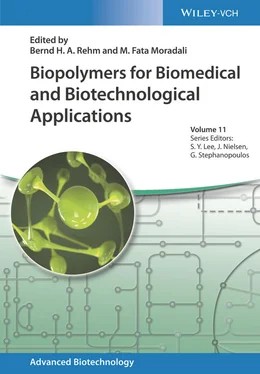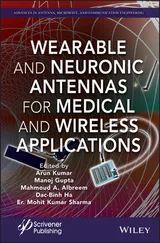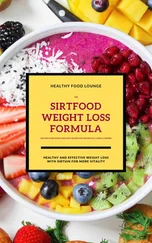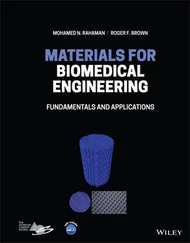19 19 Luang‐In, V., Saengha, W., and Deeseenthum, S. (2018). Characterization and bioactivities of a novel exopolysaccharide produced from lactose by Bacillus tequilensis PS21 isolated from Thai milk kefir. Microbiology and Biotechnology Letters 46 (1): 9–17.
20 20 Lourenço, S.C., Torres, C.A.V., Nunes, D. et al. (2017). Using a bacterial fucose‐rich polysaccharide as encapsulation material of bioactive compounds. International Journal of Biological Macromolecules 104: 1099–1106.
21 21 Huang, M., Wang, F., Zhou, X. et al. (2015). Hypoglycemic and hypolipidemic properties of polysaccharides from Enterobacter cloacae Z0206 in KKAy mice. Carbohydrate Polymers 117: 91–98.
22 22 Bhat, B. and Bajaj, B.K. (2018). Hypocholesterolemic and bioactive potential of exopolysaccharide from a probiotic Enterococcus faecium K1 isolated from kalarei. Bioresource Technology 254: 264–267.
23 23 Trabelsi, I., Ktari, N., Slima, S.B. et al. (2017). Evaluation of dermal wound healing activity and in vitro antibacterial and antioxidant activities of a new exopolysaccharide produced by Lactobacillus sp.Ca6. International Journal of Biological Macromolecules 103: 194–201.
24 24 Di, W., Zhang, L., Wang, S. et al. (2017). Physicochemical characterization and antitumour activity of exopolysaccharides produced by Lactobacillus casei SB27 from yak milk. Carbohydrate Polymers 171: 307–315.
25 25 Rani, R.P., Anandharaj, M., and Ravindran, A.D. (2018). Characterization of a novel exopolysaccharide produced by Lactobacillus gasseri FR4 and demonstration of its in vitro biological properties. International Journal of Biological Macromolecules 109: 772–783.
26 26 Jeong, D., Kim, D.H., Kang, I.B. et al. (2017). Characterization and antibacterial activity of a novel exopolysaccharide produced by Lactobacillus kefiranofaciens DN1 isolated from kefir. Food Control 78: 436–442.
27 27 Sasikumar, K., Vaikkath, D.K., Devendra, L., and Nampoothiri, K.M. (2017). An exopolysaccharide (EPS) from a Lactobacillus plantarum BR2 with potential benefits for making functional foods. Bioresource Technology 241: 1152–1156.
28 28 Pérez‐Ramos, A., Mohedano, M.L., Pardo, M.Á., and López, P. (2018). β‐Glucan producing Pediococcus parvulus 2.6: test of probiotic and immunomodulatory properties in zebrafish models. Frontiers in Microbiology 9: 1684.
29 29 Chen, G., Qiana, W., Li, J. et al. (2015). Exopolysaccharide of Antarctic bacterium Pseudoalteromonas sp. S‐5 induces apoptosis in K562 cells. Carbohydrate Polymers 121: 107–114.
30 30 Cheng, J.J., Chang, C.C., Chao, C.H., and Lu, M.K. (2012). Characterization of fungal sulfated polysaccharides and their synergistic anticancer effects with doxorubicin. Carbohydrate Polymers 90: 134–139.
31 31 Chen, Y., Mao, W., Tao, H. et al. (2011). Structural characterization and antioxidant properties of an exopolysaccharide produced by the mangrove endophytic fungus Aspergillus sp. Y16. Bioresource Technology 102: 8179–8184.
32 32 Bauerová, K., Mihalová, D., Drábiková, K. et al. (2012). Effects of glucomannan isolated from Candida utilis on adjuvant arthritis in Lewis rats. Current Topics in Nutraceutical Research 10 (1): 13–30.
33 33 Orlandelli, R.C., da Silva, M.L.C., Vasconcelos, A.F.D. et al. (2017). β‐(1→3,1→6)‐d‐Glucans produced by Diaporthe sp. endophytes: purification, chemical characterization and antiproliferative activity against MCF‐7 and HepG2‐C3A cells. International Journal of Biological Macromolecules 94: 431–437.
34 34 Prathyusha, A.M.V.N., Sheela, G.M., and Bramhachari, P.V. (2018). Chemical characterization and antioxidant properties of exopolysaccharides from mangrove filamentous fungi Fusarium equiseti ANP2. Biotechnology Reports 19: e00277.
35 35 Mahapatra, S. and Banerjee, D. (2012). Structural elucidation and bioactivity of a novel exopolysaccharide from endophytic Fusarium solani SD5. Carbohydrate Polymers 90: 683–689.
36 36 Lu, Y., Xu, L., Cong, Y. et al. (2019). Structural characteristics and anticancer/antioxidant activities of a novel polysaccharide from Trichoderma kanganensis. Carbohydrate Polymers 205: 63–71.
37 37 Arad, S.M., Rapoport, L., Moshkovich, A. et al. (2006). Superior biolubricant from a species of red microalga. Langmuir 22 (17): 7313–7317.
38 38 Dvir, I., Stark, A.H., Chayoth, R. et al. (2009). Hypocholesterolemic effects of nutraceuticals produced from the red microalga Porphyridium sp. in rats. Nutrients 1 (2): 156–167.
39 39 Matsui, S.M., Muizzudin, N., Arad, S.M., and Marenus, K. (2003). Sulfated polysaccharides from red microalgae anti‐inflammatory properties in vitro and in vivo. Applied Biochemistry and Biotechnology 104: 13–22.
40 40 Soanen, N., Da Silva, E., Gardarin, C. et al. (2016). Improvement of exopolysaccharide production by Porphyridium marinum. Bioresource Technology 213: 231–238.
41 41 Sun, L., Wang, C., Shi, Q., and Ma, C. (2009). Preparation of different molecular weight polysaccharides from Porphyridium cruentum and their antioxidant activities. International Journal of Biological Macromolecules 45 (1): 42–47.
42 42 Radonic, A., Thulke, S., Achenbach, J. et al. (2010). Anionic polysaccharides from phototrophic microorganisms exhibit antiviral activities to vaccinia virus. Journal of Antivirals and Antiretrovirals 2 (4): 51–55.
43 43 Roussel, M., Villay, A., Delbac, F. et al. (2015). Antimicrosporidian activity of sulfated polysaccharides from algae and their potential to control honeybee nosemosis. Carbohydrate Polymers 133: 213–220.
44 44 Huang, J., Liu, L., Yu, Y. et al. (2006). Reduction in the blood glucose level of exopolysaccharide of Porphyridium cruentum in experimental diabetic mice. Journal of Fujian Normal University 22 (3): 77–80.
45 45 Raposo, M.F.J., Morais, A.M.M.B., and Morais, R.M.S.C. (2014). Influence of sulfate on the composition and antibacterial and antiviral properties of the exopolysaccharide from Porphyridium cruentum. Life Sciences 101 (1–2): 56–63.
46 46 Villay, A., Laroche, C., Roriz, D. et al. (2013). Optimisation of culture parameters for exopolysaccharides production by the microalga Rhodella violacea. Bioresource Technology 146: 732–735.
47 47 Chen, B., You, W., Huang, J. et al. (2010). Isolation and antioxidant property of the extracellular polysaccharide from Rhodella reticulata. World Journal of Microbiology and Biotechnology 26 (5): 833–840.
48 48 Hasui, M., Matsuda, M., Okutani, K., and Shigeta, S. (1995). In vitro antiviral activities of sulfated polysaccharides from a marine microalga (Cochlodinium polykrikoides) against human immunodeficiency virus and other enveloped viruses. International Journal of Biological Macromolecules 17 (5): 293–297.
49 49 Hasui, M., Matsuda, M., Yoshimatsu, S., and Okutani, K. (1995). Production of a lactate‐associated galactan sulfate by a dinoflagellate Gymnodinium A3. Fisheries Science 61 (2): 321–326.
50 50 Umemura, K., Yanase, K., Suzuki, M. et al. (2003). Inhibition of DNA topoisomerases I and II, and growth inhibition of human cancer cell lines by a marine microalgal polysaccharide. Biochemical Pharmacology 66 (3): 481–487.
51 51 Bae, S.‐Y., Yim, J.H., Lee, H.K., and Pyo, S. (2006). Activation of murine peritoneal macrophages by sulfated exopolysaccharide from marine microalga Gyrodinium impudicum (strain KG03): involvement of the NF‐κB and JNK pathway. International Immunopharmacology 6 (3): 473–484.
52 52 Yim, J.H., Kim, S.J., Ahn, S.H. et al. (2004). Antiviral effects of sulfated exopolysaccharide from the marine microalga Gyrodinium impudicum strain KG03. Marine Biotechnology 6 (1): 17–25.
53 53 Yim, J.H., Kim, S.J., Ahn, S.H., and Lee, H.K. (2007). Characterization of a novel bioflocculant, p‐KG03, from a marine dinoflagellate, Gyrodinium impudicum KG03. Bioresource Technology 98 (2): 361–367.
Читать дальше












